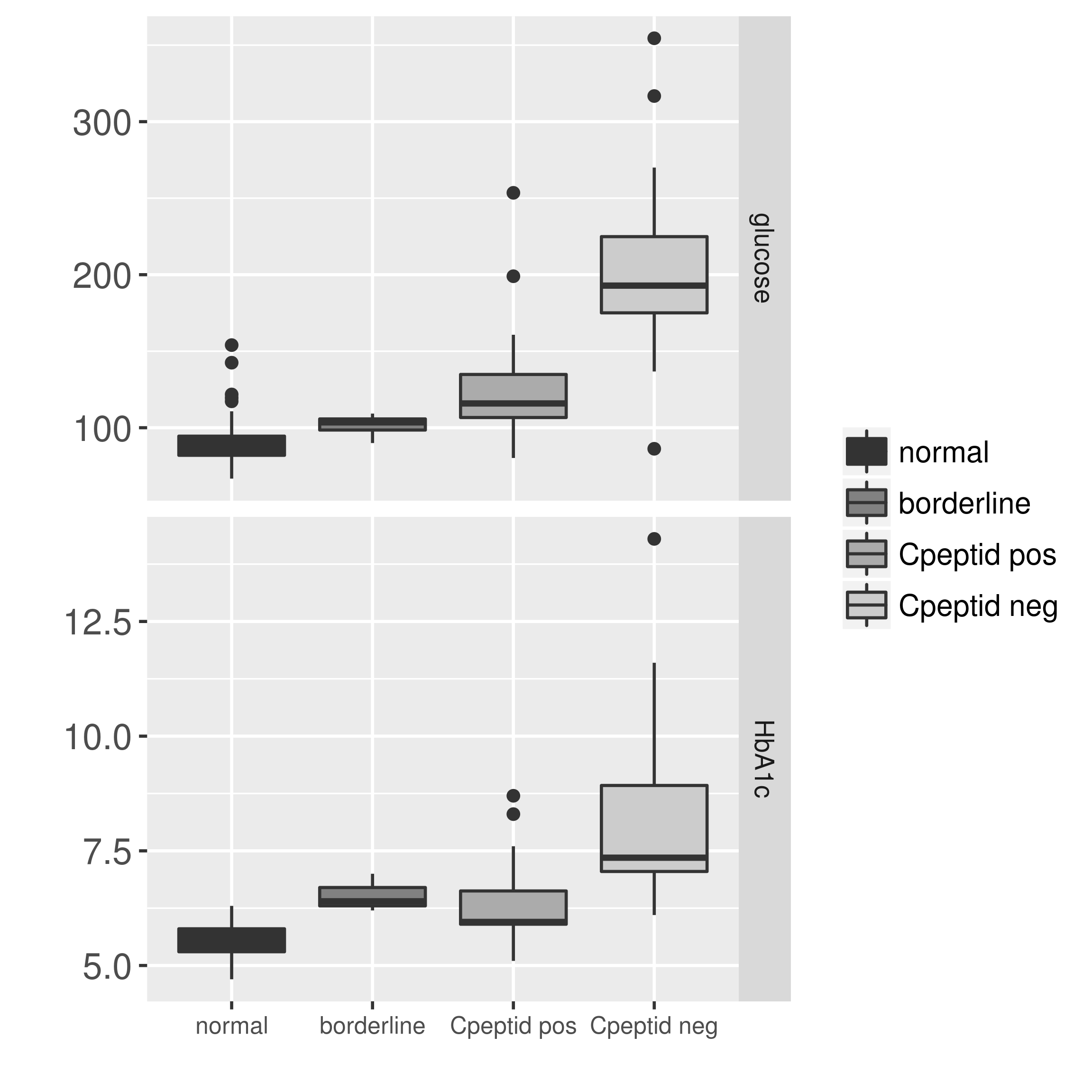Simplified Classification of Pancreas Transplant Insufficiency.
Department for Nephrology and Critical Care Medicine, Charité
- Universitätsmedizin Berlin, Berlin, Germany
Meeting: 2017 American Transplant Congress
Abstract number: 413
Keywords: Graft function, Outcome, Pancreas transplantation
Session Information
Session Name: Concurrent Session: Islet (Auto and Allo) and Pancreas Transplantation
Session Type: Concurrent Session
Date: Tuesday, May 2, 2017
Session Time: 2:30pm-4:00pm
 Presentation Time: 2:54pm-3:06pm
Presentation Time: 2:54pm-3:06pm
Location: E353C
To date, the definition of pancreas transplant (PTX) failure is based on the need for antidiabetic therapy. However, as even a marginal PTX function can improve blood glucose control, a more differentiated defintion is needed. As the proposed defintions are complicated, the applicability is to be questioned.
To better characterize PTX insufficiency, we analyzed the HbA1c and C-peptide values from 107 SPK patients and classified the patients based on HbA1c, antidiabetic therapy and C-peptid levels. The patients were assessed based on the lab testing at study entry (median 8.9 years after SPK) and followed up once a year.According to the tests used in our laboratory we used a HbA1c ≥6,0% as cut off for impaired glucose homeostasis.
Four groups of patients were identified:
Normal graft function: Patients without antidiabetic therapy with normal HbA1c ( n = 71 )
Impaired graft function: Patients without therapy with elevated HbA1c and detectable C-Peptide ( n = 7 )
Clinically manifest graft insufficiency: Patients with therapy, variable HbA1c but detectable C- peptide (n = 14)
Terminal allograft failure: Patients with therapy, variable HbA1c but negative C – peptide (n = 16)
While Group 1 essentially consists of normoglycemic patients and Group 4 essentially consists of patients with complete loss of their PTX function, it becomes evident from Groups 2 and 3 that "anti-diabetic therapy " or [bdquo]elevated HbA1c“ as sole criterion is not sufficient to characterize the whole scope of PTX failure. .
At baseline blood glucose and HbA1c levels were significant higher in group 2-4 compared with group one.  Similar results were found at one and two years after study entry. Renal transplant function was similar in all patient groups.
Similar results were found at one and two years after study entry. Renal transplant function was similar in all patient groups.
Our data show that a clinically relevant and easily applicable definition of PTX function can be made based on HbA1c, antidiabetic therapy and C-peptide secretion in PTX- patients. Important markers of glucose metabolism differbetween the respective groups.
This definition of PTX function could be the base for further studies on patient outcome and differentiated therapy.
CITATION INFORMATION: Kahl A, Hinrichs C. Simplified Classification of Pancreas Transplant Insufficiency. Am J Transplant. 2017;17 (suppl 3).
To cite this abstract in AMA style:
Kahl A, Hinrichs C. Simplified Classification of Pancreas Transplant Insufficiency. [abstract]. Am J Transplant. 2017; 17 (suppl 3). https://atcmeetingabstracts.com/abstract/simplified-classification-of-pancreas-transplant-insufficiency/. Accessed December 18, 2025.« Back to 2017 American Transplant Congress
